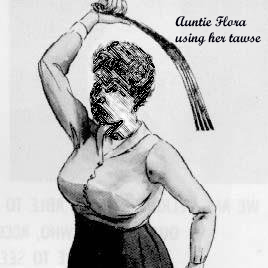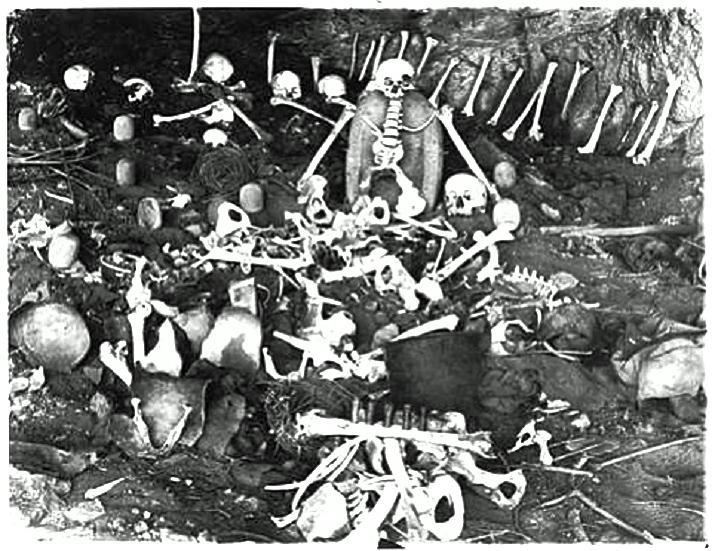The Wedding (1876)
The wedding was a quiet affair that took place in Minister Sinclair’s manse rather than the church, which was in disrepair. Ruaridh was twice her age, at 34, Morag was only 17 years old. But despite their age differences, they looked like a well-matched couple when they stood together inside the manse waiting for their marriage to be made official. He was strong, robust, and fair, while she was petite and dark, a beautiful young woman!
After their humble wedding, Morag moved into the Campbell’s cottage. Her life, which had been miserable and painful before, now became even worse because of how she is treated by her ‘new family,’ especially her sister-in-law Flora. Before she gave birth to her first child, the baby she hoped would bring light to her life, her days were spent performing chores in the cottage, and working in the fields. Part of her feels shameful for first believing she was carrying a curse rather than a baby. Because what Ruaridh did to her was wrong, she thought her pregnancy was cursed.
The Birth of their First Child Anne
She gave birth to her first child, a baby girl they named Anne.1 While she gazed at her newborn baby feeding at her breast, she saw a flicker of ‘hope’ in her life—perhaps her life would change for the better.
As mentioned, Morag had moved into the Campbell cottage, which was quite humble. But, as she had married in shame, she spoke little and kept silent. Ruaridh’s parents and sisters regarded her as a sinful young flirt, like her mother, Mary.
Ruaridh and Morag’s First Years of Marriage
Out of respect for his new wife and their newborn child, Ruaridh stopped drinking in the old tavern. He also felt guilty about his first abuse of her. So, even though they were married, he did not enjoy his conjugal rights in the first years after their wedding.
But the novelty of being a ‘repentant husband’ wore off after some years. So he returned to his old ways of drinking and carousing at the local tavern.
When replete with whisky, the idea of repentance made no sense to him; the only thing that made sense to him was that he was married and that his wife should ‘behave like a wife.’ So, many nights after returning drunk from the old tavern, he demanded that his wife fulfil his conjugal rights.
Thus, after three years, and many such drunken nightly encounters, she gave birth to her second child; they christened her Morag. But Morag died after only seven days.2 The baby had become ill, but there was no doctor on the island, so they wrote on her death certificate: “cause of death: ‘unknown’.”
Morag was very emotional. She believes that naming her second child after herself was a curse that resulted in the baby’s death. Morag wanted to mourn and cry her heart out, but a few days after giving birth, she was too busy working in the fields and doing her chores in the cottage to think about her problems.
Ruaridh’s drunken nightly visits became a ritual, so Morag went on to give birth to four more children.
Auntie Flora and her Tawse

The introduction of compulsory education in Scotland also resulted in the production of instruments of education, or more specifically, the Scottish tawse. The tawse is an instrument of corporal punishment used for educational discipline, primarily in Scottish schools. A tawse consists of a strip of leather, with one end split into a number of tails. The thickness of the leather and the number of tails are variable. It was used to chastise ‘slow learners’ and disobedient children. Anyone could buy a tawse; in fact, it became a central physical symbol of power and abuse in many Scottish homes.
In the Campbell cottage, the tawse hung above the fireplace. Auntie Flora was now getting too old to work in the fields, but she was still strong enough to use the leather strap, the ‘tawse.’ She would command the children and Morag to do their tasks; if they hesitated, she would give them a lashing with the tawse. As mentioned, the whip hung above the fireplace. Normally, it would be enough for her to glance at the whip on the wall, and this was usually enough to make her sister-in-law and the children get on with their work.
The stern old spinster Flora, whom no man had wanted to marry, seemed to enjoy whipping Morag and the children. She was only too happy if they were disobedient so she could take the whip from the wall and use it.
Flora would often whip Morag across the back of her legs and buttocks, if she thought Morag was being lazy, saying to her, “Ye thought ye wid hae an easy life giein’ yersel’ tae mah brother, ye wee flirt! Weel yer wrong! As lang as a’m heid o’ this household ye wull hae tae wirk fur yer meals!”3
Auntie Flora would bend Morag over the back of a chair, and lift up her skirt, to lash the back of her bare thighs and buttocks. She would punctuate every stroke of the strap with a remonstrance, insult or warning, such as, “Yer a wee whore juist lik’ yer mither. Yer mither played th’ whore ‘n’ gave birth tae ye in shame. She thought she wid gie herself tae men who wid gie her money ‘n’ gifts.”45
The Death of Donald Campbell
Ruaridh’s father, Donald, died two years before Morag gave birth to a third child they named after him.6 Flora, the fourth child, was named after Ruaridh’s spinster sister. The fifth, Ewen, was named after Morag’s father, Ewen MacKinnon, while the sixth, Peggie, was named after Ruaridh’s mother, who passed away not long after his father.
Sources
- In fact, the marriage certificate states that he was 30 years old and she 21 years old – but these ages are unreliable – as they do not correspond with later official documents. They were married on June 27, 1876. The birth certificate of their first child Anne is unclear – but it seems that she was born 4 November 1877. In other words, their first child was born more than one year after their marriage. So, the ‘suggestion’ that Ruaridh abused Morag before their marriage is unjustified based on official documents.
But her death certificate states that she had been ‘paralysed’ for eight years – during which time she gave birth to at least four children. Of course, we don’t know what ‘paralysis’ means specifically, but I have the oral evidence of my mother that her grandfather used to ‘carry his wife around the island’. So in other words, the story is based on ‘flimsy’ evidence.
Nevertheless, I have taken so-called ‘poetic / artistic liberties’ when telling the story. You don’t need to have a ‘wild’ imagination to imagine what life was like for an illegitimate child – a girl – who belonged to the class of tenant farmers in nineteenth century Scotland. In other words, the story may not be wholly true, but it attempts to recreate in spirit the lives of Scottish women in the late nineteenth century in the Western Isles of Scotland. ↩︎ - Born and died in 1880. ↩︎
- “You thought you would have an easy life giving yourself to my brother, you little flirt! Well you are wrong! As long as I am head of this household you will have to work for your meals!” ↩︎
- Hosea 2:5. ↩︎
- You are a little whore just like your mother. Your mother played the whore and gave birth to you in shame. She thought she would give herself to men who would give her money and gifts. ↩︎
- Donald was born in 1881. ↩︎


